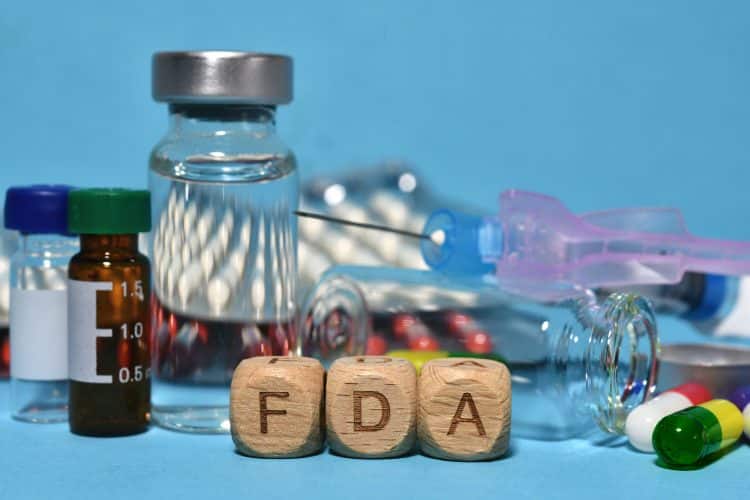With more than 50% of Americans taking one prescription medication, and an estimated 4.9 billion prescriptions to be filled in 2024, the Food and Drug Administration (FDA) is one of the most influential branches of the American government. [1][2] Before any drug reaches the market, there is a complicated series of steps needed for approval. These steps may seem tedious at times, but increased transparency helps consumers and manufacturers understand how safe drugs are in the United States.
History of the FDA and Landmark Legislations
The first government attempt at regulating food and drugs in the United States came with the passage of the Pure Food and Drug Act in 1906. [3] Prior to this law, there were no restrictions limiting unsafe ingredients, unsubstantiated claims, or false promises of therapeutic benefits on drug products. The Pure Food and Drug act limited the improper labeling of ingredients for drugs, but this legislation only applied to interstate sales. To further close the loopholes left open, Congress passed the Sherley Amendment in 1912, outlawing false therapeutic claims on medicinal labels.[4] These two legislations formed the bedrock for the FDA, which was officially incorporated into the Bureau of Chemistry under the Department of Agriculture in 1930.
It wasn’t until the passage of the Food, Drug, and Cosmetic Act in 1938 that the FDA began clearly defining their regulatory role. This law was passed as a result of an accidental poisoning of 105 Americans in 1937 by a drug company called S.E. Massengill. [5] Instead of synthesizing an antibiotic, S.E. Massengill accidentally manufactured ethylene glycol, the active ingredient in antifreeze, which they sold to consumers without recognizing their mistake. The public was outraged, and demanded government action to protect consumers. The subsequent FDaC Act established the multiple layers of drug testing procedures overseen by the FDA to ensure a drug’s safety to its release to the market. This process was improved further in 1962 with the passage of the Kefauver-Harris Amendment, which mandated drug manufacturers provide data on the combined safety and efficacy of their drugs.[6] This further refined the clinical trial process by forcing drug companies to report any dangerous side effects that may have otherwise gone unreported. Since the in1960’s the FDA has made a few minor changes to update their practices for the modern age. This includes designations allowing for faster approvals and includes the passage of 1983’s Orphan Drug Act and 2018’s Right To Try Act. [7][8]
Drug Approval Process
Logically, the first step in any drug’s development is the discovery process. [9] This is the period where a drug manufacturer conducts internal lab testing within the company, attempting to develop new chemical compounds with medical benefits. This period primarily involves testing on animals to assess the physiologic effects, pharmacodynamics, and pharmacokinetics of the new chemical compounds.
When the testing standards are satisfied, it is time to involve the FDA with an Investigational New Drug (IND) application.[10] This phase focuses on safety for human consumption, and drug manufacturers must supply three pieces of data. The first is related to the toxicity and pharmacology of the drugs used on the animal. Second, that the drugs can be manufactured safely with a similar composition. Third, how the manufacturer plans to proceed with tests on human participants, including any documents providing participants’ informed consent. The FDA then has 30 days to raise any objections and concerns, and if they do not, phase I clinical trials may begin. [11]
- Phase I typically consists of a single blind study with 20-80 healthy volunteers, with the goal of determining adequate human dosage and any other possible side effects that may not have been present in the animal trials. Once phase I is completed, and the drug manufacturer has more data related to human consumption, phase II trials can begin. [12]
- Phase II is similar to phase I, in that it is still a single blind study, but the sample size of volunteers typically ranges in the hundreds. Also, to prove the efficacy of the drug being tested, phase II is usually performed on subjects who have the disease the drug is targeting. If this phase goes well, the manufacturer will move on to phase III, the final testing period. [13]
- Phase III trial consists of a double-blind study with the largest sample size, frequently involving thousands of volunteers. This expanded group helps to identify additional side effects that may be that may have been more elusive during the first two testing phases.
Communication with the FDA is ongoing throughout the IND application process, but their role is most rigorous between phases II and III. This is to help safeguard against possible risks that may be overlooked prior to expanding the studies to larger groups of test subjects, while ensuring all volunteers are fully aware of the possible dangers.
Once all three phases are complete, the drug manufacturers hold a pre-New Drug Application (NDA) meeting with the FDA to discuss any concerns before submitting an NDA. [14] The FDA has 60 days to review the clinical data, and if these feel the data supports advancement they will file it for review. During review, the FDA goes beyond the clinical data to examine drug labels and manufacturing facilities to ensure everything is both accurate and safe.
The final decision whether the new drug will be approved takes approximately ten months. If the NDA is approved, the manufacturer has permission to begin mass production in the United States, allowing them to market, sell, and negotiate with insurance providers to include this new therapy in American patients’ coverage. This encompasses drug approval in the United States, but for drugs to be sold elsewhere, they must also go through the additional approvals through other countries’ health institutions. This means submitting applications to organizations like the European Medicines Agency or the National Health Service in the United Kingdom. It is common practice to use the same data from clinical trials across multiple regions, though, which means approval in other parts of the world takes less time following the initial acceptance by the FDA. [15]
Orphan Drugs Act Incentives
Considering the time and effort it takes to develop, test, and approve a new drug, it would make sense that most pharmaceutical companies would try to develop drugs that have the potential to reach the largest amount of people to maximize the profits following approval. To incentivize companies to explore additional treatments for less common diseases, the FDA passed the Orphan Drug Act in 1983. Orphan drugs are pharmaceuticals that either target diseases affecting less than 200,000 Americans, or are unlikely to be profitable in the first seven years following their approval.
This helps to promote an increased common good by encouraging companies to continue researching drugs that may otherwise be unprofitable at first. To overcome the rigid standards of testing, and thus increased cost, the FDA provides benefits for companies willing to pursue research on their orphan drugs in the form of tax credits, marketing rights, research grants, and development assistance. This may indirectly help pharmaceutical companies by improving their bottom line through lowered overall cost basis overall. Meaning, they can continue to profit from the drugs with mass appeal and receive tax breaks or increased funding through these orphan drugs. Additionally, the FDA has shown more flexibility in the approval of orphan drugs, because it can be difficult conducting clinical trials for rare diseases. That being said, the drugs must still go through the full approval process, the FDA is just willing to approve the drug using smaller sample sizes.
Fast Track Exceptions
There are several exceptions and accelerations that the FDA has adopted in recent years to help approve treatments for conditions that are otherwise non-existent. [17] This began with the “fast track” designation in the approval process beginning in 1988. This designation helped to streamline new drug approvals by communicating more frequently with the FDA during the testing phases to speed up the approval process.
By 1992, the FDA introduced two new fast track designations known as “accelerated approval” and “priority review.” [18] Accelerated approval speeds up the process by accepting predicted, synthetic endpoints during the clinical trial, shortening the approval process. This means that pharmaceutical companies may predict, to a reasonable extent, the efficacy and safety of their drugs based on previous data without waiting for extended amounts of time. Priority review also can shorten the approval of NDA by cutting the review time to six months instead of 10 months.
In 2012, the FDA expanded the fast track programs further by creating the “breakthrough therapy” designations. [19] This designation offers the shortest median approval times, but has the highest standards during the testing process. In order to be classified as a “breakthrough therapy” a new drug must treat a serious medical condition, and the manufacturer must prove their product provides data that their product offers a substantial improvement over existing treatments.
If granted, the FDA not only speeds up the approval process, but also offers guidance throughout the drug trial process on how to make sure that the new therapy is approved, ensuring the new drug reaches the market as quickly as possible. The risk associated with this designation is that with increased speed there is the potential to overlook any dangerous side effects that would otherwise be identified through the more rigorous approval process. The FDA weighs these risks though, and determines that the value of these drugs being available quicker must dramatically surpass the risks from any missed side effects.
Finally, to help improve access to patients that may otherwise go without treatment, the FDA approve the Right To Try Act in 2018, allowing patients to elect to try unapproved treatments without oversight by the FDA.[20] This law only applies to patients facing life-threatening conditions, without any other reasonable means of therapy, with a willing prescriber, and the drugs must have gone through phase I. The FDA typically approves 99.7% of patients applying for this expanded access in as little as four days. [21] The primary obstacle is that many drug manufacturers have several disincentives to provide experimental drugs for these patients. This may include a limited supply, administrative burdens of tracking and assessing the patients, and the risk of unfavorable data that could delay the approval process.
References:
- Centers for Disease Control. “Health, United States, 2015; Trend Tables, Table 79. Prescription drug use in the past 30 days, by sex, race and Hispanic origin, and age: United States, selected years 1988–1994 through 2009–2012.” (2017).
- Sabanoglu, Tugba. “Total Number of Retail Prescriptions Filled Annually in the US, 2013-2025.” Statista. com, February 4 (2021).
- Nasr, Alexander, Thomas J. Lauterio, and Matthew W. Davis. “Unapproved drugs in the United States and the Food and Drug Administration.” Advances in therapy 28.10 (2011): 842-856.
- Torbenson, Michael, and Jonathon Erlen. “A Case Study of the Lash’s Bitters Company—Advertising Changes after the Federal Food and Drugs Act of 1906 and the Sherley Amendment of 1912.” Pharmacy in history 45.4 (2003): 139-149.
- Government Publishing Office USCODE-2011-title21-chap9-subchapI-sec301.pdf. https://www.govinfo.gov/content/pkg/USCODE-2011-title21/pdf/USCODE-2011-title21-chap9-subchapI-sec301.pdf. Accessed January 11, 2019.
- Greene, Jeremy A., and Scott H. Podolsky. “Reform, regulation, and pharmaceuticals—the Kefauver–Harris Amendments at 50.” New England Journal of Medicine 367.16 (2012): 1481-1483.
- Thomas, Shailin, and Arthur Caplan. “The orphan drug act revisited.” Jama 321.9 (2019): 833-834.
- Agarwal, Rajiv, and Leonard B. Saltz. “Understanding the right to try act.” Clinical Cancer Research 26.2 (2020): 340-343.
- Dickov, Veselin. “The basis of the discovery process for a new pharmaceutical product.” Central European Journal of Medicine 7.6 (2012): 691-699.
- Holbein, ME Blair. “Understanding FDA regulatory requirements for investigational new drug applications for sponsor-investigators.” Journal of investigative medicine 57.6 (2009): 688-694.
- Ivy, S. Percy, et al. “Approaches to phase 1 clinical trial design focused on safety, efficiency, and selected patient populations: a report from the clinical trial design task force of the national cancer institute investigational drug steering committee.” Clinical Cancer Research 16.6 (2010): 1726-1736.
- Evans, Scott R. “Clinical trial structures.” Journal of experimental stroke & translational medicine 3.1 (2010): 8.
- Dilts, David M., et al. “Phase III clinical trial development: a process of chutes and ladders.” Clinical Cancer Research 16.22 (2010): 5381-5389.
- Lipsky, Martin S., and Lisa K. Sharp. “From idea to market: the drug approval process.” The Journal of the American Board of Family Practice 14.5 (2001): 362-367.
- Shenoy P. Multi-regional clinical trials and global drug development. Perspect Clin Res. 2016 Apr-Jun;7(2):62-7. doi: 10.4103/2229-3485.179430. PMID: 27141471; PMCID: PMC4840793.
- Haffner, Marlene E. “Adopting orphan drugs—two dozen years of treating rare diseases.” New England Journal of Medicine 354.5 (2006): 445-447.
- Fan, Ms Valerie, RadioDexterTM MK, and Dear Ms Fan. “Department of Health & Human Services.” Obstetrics/Gynecology 240 (2001): 276-0115.
- Kesselheim, A. S., and J. J. Darrow. “FDA designations for therapeutics and their impact on drug development and regulatory review outcomes.” Clinical Pharmacology & Therapeutics 97.1 (2015): 29-36.
- Corrigan-Curay, Jacqueline, Amy E. McKee, and Peter Stein. “Breakthrough-therapy designation—an FDA perspective.” New England Journal of Medicine 378.15 (2018): 1457-1458.
- Sandefur, Christina. “Safeguarding the right to try.” Ariz. St. LJ 49 (2017): 513.
- Jarow, Jonathan P., et al. “Expanded access of investigational drugs: the experience of the center of drug evaluation and research over a 10-year period.” Therapeutic innovation & regulatory science 50.6 (2016): 705-709.












